To date, the breeders of all over the world are derived a huge number of decorative plants, which can become an excellent decoration of any plot. Many gardeners prefer to plant exotic and unusual plants with a bright appearance, thereby creating a unique landscape design.
A bright exotic plants can be attributed to Magonia Padoliste - evergreen shrub with decorative foliage, flowers and berries. If all the basic rules of the cultivation of Magonia Padurboltnaya, you can get a beautiful and strong plant, even though it is the inhabitant of forests of North America.
In this article, we will look at the main features and description of Magonia Padoliste, and also describe the most common varieties of this culture. We emphasize the main nuances of agrotechnics of growing evergreen beauties.
Features and description of Magonia Padoliste
Magonia Padoliste is a low evergreen shrub, which refers to the genus Magonia and a large family of decorative barberry plants. The territory of North America is considered to be the homeland of this evergreen beauty. It was on this continent that Magonia Padoliste received simply enormous distribution and grows almost everywhere. This plant was widely known was even during the days of American Indians, which were used by parts of Magonia in medicine and in food. However, the official recognition of this culture was received in 1806, when the American sodon designer found this plant in local forests and gave him a full description. The name of this gardener Bernard Mak Magon. And it was in his honor that a beautiful decorative plant of the barberry family called this.
The world distribution, especially in Europe, Magonia Padoliste received already in 1822, after which he became the unchanged decoration of urban gardening, parks, part of the framing of sidewalks and tracks. In Russia, this exotic plant appeared much later, only in the middle of the 19th century, Krasavitsa Magonia won the hearts of many domestic gardeners.
Magonia Padurbisnaya description:
- Magonia is grown in the form of evergreen low shrub and has decorative throughout the year. This plant will become a central design element at any time of the year: in summer - leaves and flowers, autumn - leaves and berries, in winter branches and foliage.
- In the height, the shrub of Magonia is padurbisnate as possible to reach 1-1,5m, therefore it is ideal for creating low hedges and framing garden tracks.
- The shrub of the plant is formed by a large number of shoots that are tightly adjacent to each other, thereby creating a dense and compact form of the crown.
- The shoots of the young plant have a gentle pinkish gray shade, which changes together with the growth of Magonia. In an adult plant, the bark becomes brown-gray with longitudinal stripes.
- The main decoration of the Magonia of Padurbolina - foliage, which remains decorative throughout the seasons.
- The leaves of this plant are large, with a smooth and shiny surface, slightly leathery. On average, one sheet length can reach 20 cm.
- Magonia leaves have a complex structure and are unpaired, consist on average of 5-9 small leaflets with a served edge. With its appearance, the leaves of Magonia Padurboliste resemble oak, as he says and the name of this type of plant.
- Painter leaves on long reddish stiffs.
- At the beginning of the vegetation, the foliage has a reddish tint, in the middle of summer they are already dark green, and in the fall painted in crimson and burgundy shades, there are also varieties with gold and motley foliage.
- Flowers of Magonia are collected in blizzard or creeps-shaped inflorescences of fairly large sizes.
- The flower itself is very small, about 7-9 mm in diameter and in shape resembles a bright lemon bell.
- The middle of flowering falls on April or May.
- The berries of Magonia Padurboliste appear at the end of summer or at the beginning of autumn and have an oblong shape to 1 cm in diameter. In the color they are dark blue with a sly rode and a fly. The fruits of the plants have a pleasant taste, they can be eaten and cooking wine from it.
Variety of varieties of Magonia Padoliste
To date, there are several decorative forms of Magonia Padurboliste, among which the following can be distinguished:
- The nutty form is, in contrast to the classical form of Magonia, the padurbolis leaves are smaller and consist of 5 small leaves, dense and narrow. To the shoots, these leaves are attached on long reddish stiffs.
- Magonia is palpole graceful. Leaves of this plant consist of very thin and elegant little leaves.
- Golden shape of Magonia Padurbiste. This form of plant was brought relatively recently. A distinctive feature of such Magonia is a bright golden color of foliage.
- Magonia's motley form. Also a fairly new result of the work of breeders. It is a low shrub with a motley color of foliage, which consists of silver, green and yellowish tones.
Popular varieties of Magonia Padoliste:
- Grade "Apollo". This variety of decorative Magonia is very popular in Europe. He was led in the Netherlands in 1973. This shrub can reach 1 m in height. The diameter of the crown is also almost 1 m. The plant itself is very compact and dense due to the dense growth of shoots. The leaves of Magonia varieties "Apollo" are very large, in length can reach 30 cm. The leaves are complex, consist of 5-7 leafs with a served edge. In the color of dark green, the fall becomes crimson-bronze. Flowers bloom in Mai with bright yellow bells.
- Grade "Atropurpur". One of the oldest varieties of Magonia Padoliste was also led in Holland. Refers to low shrubs, can reach the height of 60 cm. The shoots are covered with large leaves with a shiny surface and reach 25 cm long. The color of foliage is dark green. This grade blooms in May with bright yellow flower, which smells very pleasant. The fruits are very small, it is the dark blue color.
- Magobarbaris Newbert. This is a hybrid variety that was derived from the crossing of Magonia Padoliste and Barbaris. It is an evergreen or native decorative shrub. Can grow up to 1 m in height. The leaves of the oblong shape, sawn and rather dense. The size is small, up to 7 cm long.
- Grade "Versimicor". Shrubs tall up to 1 m. Differs on the motley coloring of foliage. The surface of foliage is covered with green, creamy, orange stains in summer and purple autumn and winter.
- Grade "Baby". He is an edible grade, which was revealed relatively recently. A low bush that grows very slowly. A bush is formed from a slightly curved and very branched shoots. Fruits are collected in long brushes. Magonia's berries themselves are very small, oblong form. Almost black with a small blue bloom.
- Sort "Sweat". Another representative of edible varieties of Padurbolis Magonia. A relatively low bush, which is formed by straight shoots, tightly located with each other. Fruits are also collected in oblong brushes. In shape they are rounded, black with a naiz of bloom.
- Sort "Mermaid". This variety of Magonia has a higher increase than the previous ones. What is growing too fast. The bush is formed slightly curved, very branched shoots. Green leaves with reddish vest floor. Fruits edible, oval shape. Almost black in color.
- Grade "Timoshka". This evergreen shrub is distinguished by a strong spread, is formed with a large number of straight shoots. All shoots are thickly covered with light green foliage, which in the fall acquires a purple shade. Fruits of small size, oblong shape and black with a blue bloom.
Magonia Padurbisnate reproduction: the most common ways
Magonia Padoliste multiplies with a variety of ways. You can easily use seed reproduction for breeding this decorative shrub, also green or weathered cuttings or glasses. Consider each method separately.
Magonia Padoliste
- This method is the most difficult and applied quite rarely.
- You can easily buy Magonia Seeds Padurbisnut in a specialized store or collect yourself. If you have a bush of this decorative plant on your site, then collect seeds are necessary from very ripe fruits. Berries distribute, you can squeeze through gauze. Seeds rinse and dry.
- If you are planning the spring sowing of the Magonia Seeds, then it is necessary to subjected to the stratification process, i.e. Turn the planting material. To do this, place the seeds into the wet substrate and put the pot into the fridge for 3 months.
- With autumn planting, seeds are sown immediately after harvesting on slightly shaded areas.
- You can use seed seed containers, and you can soak directly into the ground or greenhouse. Prepare the soil mixture consisting of peat and sand.
- Magonia Padurbisnate seeds are close to a depth of 1-2 cm. When evounced in the garden in autumn, the planting material passes natural stratification and the spring gives shoots.
- Seedlings grow pretty slowly, only a year later, the seedlings need to be frozen, and in just a couple of years it is possible to land the saplings of Magonia to a permanent place.
- Magonia Padurbisnaya will bloom and give fruit after seed reproduction only in 4-5 years.
Magonia Padinbulatte Magonia Reproduction
- This method is applied much more often than seed reproduction.
- The optimal time for the billet of the planting material for breeding spring.
- The cuttings must be cut from the most healthy and strong shoots. On an adult bush of Magonia Padoliste Choose young green shoots with leaves.
- When cutting cuttings, the lower cut must necessarily be oblique, and the top is direct. In addition, the lower cut should be a couplex below the kidney.
- Next you need to cut the leaflets on the cuttings.
- For a faster rooting, the prepared cuttings are lowering into a special solution of the rooting agent.
- After that, processes the place of rooting of the cuttings of fungicides for disinfection, and only then landing the planting material. Choofing the cuttings can be in the open soil or greenhouse.
- To root the cuttings is needed to the first lower kidney.
- Next, for several days, be sure to cover the cuttings with a film or separate plastic bottles.
- Further care requires constant irrigation.
- Cuttings can be rooted in water. To do this, the prepared planting material is placed in a container with water, where the cuttings will be empty. When the roots are growing at 6-7 cm, they can be planted at a permanent place.
Magonia reproduction with palpoles
- Very simple and convenient way in the independent dilution of Magonia Padoliste.
- The reproduction of root offspring is best in the spring.
- In April, on an adult mother's bush, choose strong and healthy lower shoots.
- Next, prepare a small trench under the bush and go to her selected escape.
- Gently pour it with soil, leaving only the top and plenty.
- Throughout the season, the tank must be abundantly and often watered for fast rooting.
- In the fall, you can disconnect the young plant from the maternal. To do this, neatly shovel dig a plant and put it in a reserved place.
Stages of preparation before landing Magonia Padoliste
Magonia is padurbisate is a plant that is resistant to strong frost and cold and no particularly addictive in care. However, to obtain a beautiful and healthy plant that will definitely be fruitful, it is necessary to carefully prepare before planting culture. It is important to choose a high-quality seedling and find the most suitable place on its site.
Stage 1. Selection of planting material
- If you decide to place Magonia Padoliste yourself, then you can use one of the above methods to obtain a healthy and high-quality planting material.
- However, today in specialized stores or agrofirms that are engaged in professional breeding plants, there is a huge number of seedlings of even exotic cultures. Here you can buy a Magonia Padurbisnaya in the form of a grown seedling.
- Before buying it is important to decide with the variety you want to put on your site. The choice of a particular variety of Magonia will depend on the landing site. Lower plants are perfectly suitable for the framing paths and borders, and high - for landing along buildings or fences.
- It is also important before purchasing thoroughly inspect the seedling. It should not be visible damage and signs of various diseases and pests. Soil in the container should be clean and moistened.
- Create seedlings with a closed and open root system. If you plan to immediately plant in open ground, then you can buy a magonium with open roots.
Stage 2. Choosing a place to land Magonia Padoliste
- From the choice of landing site of Magonia will also depend on its full growth and fruiting.
- Magonia prefers to grow on well-lit and sunny places, but a light shadow is also necessary. That is how you get the most decorative plant with a bright color of foliage and delicious berries.
- Choose on your site a bit sublime and protected from strong winds and drafts place for landing.
- This plant also loves to grow under the crowns of high and empty trees, as in nature, Magonia grows in the forests.
- Before boarding, it is important to consider the future landscape design with the participation of Magonia Padoliste. It can be planted as a living beautiful hedge or for the framing of garden tracks and borders. Magonia is also suitable for a single landing on a lawn background.
Stage 3. Choice and soil preparation for landing
- Magonia is palpolete prefers to grow on fertile and loose soils.
- It is also important that the soil keeps moisture well and is simultaneously easy.
- If you have a large content of clay on your site, then it is necessary to make a drainage layer when landing.
- It is important that the soil is full of humus, so before landing, carefully disappear selected plot and add a little reworked manure to the substrate.
TECHNOLOGY OF MAGONE PADOROLIST
- Landing Magonia Padoliste must be carried out in the spring, so the plant will have time to root on the selected area and prepare for frosts.
- Landing Pits need to prepare in advance. It is best to do this a few months before landing.
- The soil at the selected area should consist of turf, sand and peat. And it is also important to dwell well, about two bayonet shovels.
- After that, prepare landing holes, the depth of which should be about 40-50 cm, since the root system of the young plant will grow very quickly.
- If you sit down several plants nearby, it is very important to observe a sufficient distance between the seedlings. To obtain a dense landing, the distance should be at least 1 m, and for more rare - 1.5-2 m.
- Before the landing at the bottom of the pit, place a layer of good drainage. As a drainage, you can use broken bricks, small stones or gravel.
- Next form a small hilly at the bottom.
- Gently remove the Magonia Sapers with a padurbiste from the container and put on the landing pits with the land.
- Put the soil mixture and compact the soil around the plant, while watching the root neck to be on the same level with the surface of the Earth.
- Update every young bush.
Magonia Padurbisnate Growing Agrotechnology: Secrets and Nuances of Care
Like another decorative plant, Magonia needs attention and care. The care of Magonia Padurbisnate will not be difficult even a newcomer in gardening, but it will have to make some efforts. As a result, you will get a beautiful plant with bright colors and abundant fruits. The process of care for this culture is not complicated and will require it timely irrigation, loosening and feeding. Consider the peculiarities of each stage of growing Magonia on your site.
Watering Magonia Padolisnaya
Magonia Holly loves moisture, so it is important to provide a plant timely and abundant irrigation. This is especially true of young plants that need an increased amount of irrigation. Also more often water the beauty of Magonia will have to dry the time of the year. Usually one plant leaves one water bucket with regularity at least twice a week. After each irrigation, the crown irrigation can be carried out, which will have a beneficial effect on the general well-being of the plant.
Loosening and mulching
After each irrigation of the soil around the plants, it is important to constantly loose, as Magonia is puffed prefers to grow on loose and light soils. In a dense substrate, the plant may heat and slow down in growth. During loosening, it is important to remove all weeds, while you need to be very neat. The plant allows many root offspring. Therefore, you need to follow in order not to damage them. To reduce the amount of loosening the soil around Magonia, you can be meditated using peat or dry wood sawdust.
Padurbisnaya Magonia
Making fertilizers for Magonia Padurbisnut is not so important, however, to get a lush and beautiful plant, you can easily eat a shrub for a season for a season. The first feeding is carried out during the wake of the plant immediately after the snow. In this period, it is necessary to make nitrogen fertilizer nitroammophos. The second feeder is carried out before the start of the shrub flowering, in this case nitrogen fertilizer is also used.
Padurbisnaya Magonia Trimming
Magonia Padoliste has a pretty compact and dense crown and practically does not need trimming. However, to obtain a small hedge or more correctly, after the end of flowering, you can pruning shoots. It is important to remember that Magonia blooms on the shoots of last year, so it takes no more than half of the escape.
Fighting diseases and pests of Magonia Padoliste
Diseases:
- Spottedness. In order to prevent the appearance of this disease, it is important in the spring of spraying plants with drugs containing copper. To combat already appearing signs of disease, you can use a solution of copper mood and soap.
- Puffy dew. To combat this disease, you can use the special preparation of Fundazole.
- Rust. To combat such a disease, it is possible to use preparations containing sulfur in its composition. With a large infection, the plant is recommended to be completely removed.
To the appearance of pests, Magonia is a puffolisant stable.
Preparation for winter
In the middle lane, Magonia Padoliste does not need shelter, so it has good frost resistance. However, in more severe climatic conditions, it is recommended to cover the plant with a spruce vegetable plant and nonwoven underfloor material.
Using Magonia Padoliste in Landscape Design
Magonia is a padurbisate in landscape design is a simply indispensable plant, especially in recent years, when the popularity of this culture has greatly increased. Consider the main options for placing this culture on the site.
- The plant is great for single landings on the background of buildings or lawns.
- It is a separate architectural plant that has a compact crown.
- Magonia can be grown on the slopes of hills and hillocks, as well as use for the design of the Alpine slides.
- Magonia is an excellent plant for creating decorative vibrant hedges.
- Suitable for curb design.
- It is possible to grown in combination with various plants and trees, both blooming and not.
Photo of Magonia Padurbisnate in Landscape Design
You can more clearly see all the features of the use of Magonia in landscape design on the photo suggested below.
Magonia Padoliste became a find of a real find for modern gardeners. This plant has amazing decorative capable of decorating any plot, while careful care will not be much difficult.

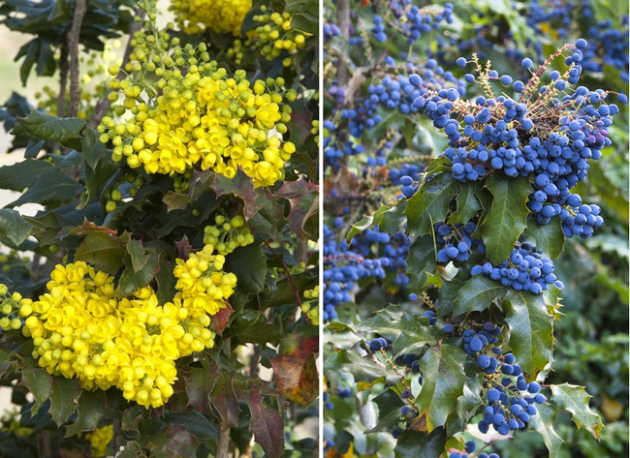
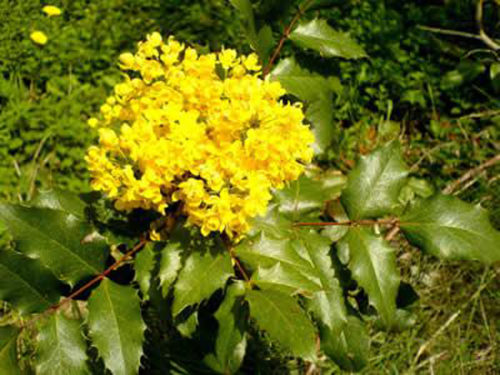
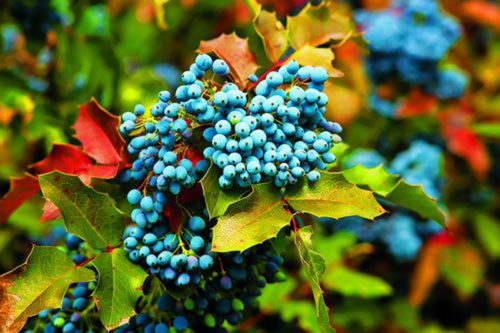
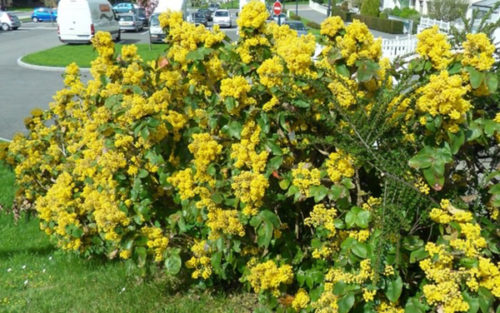
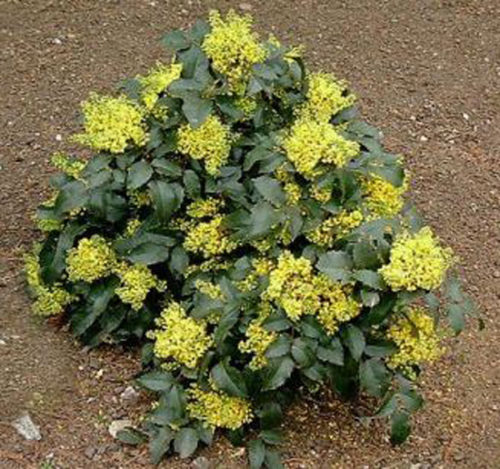
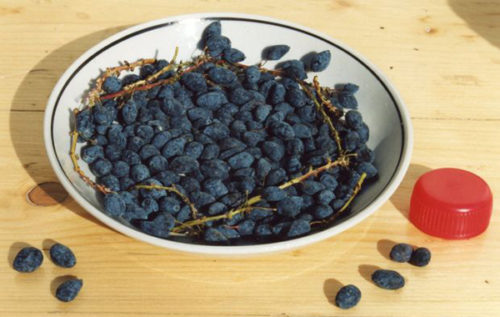
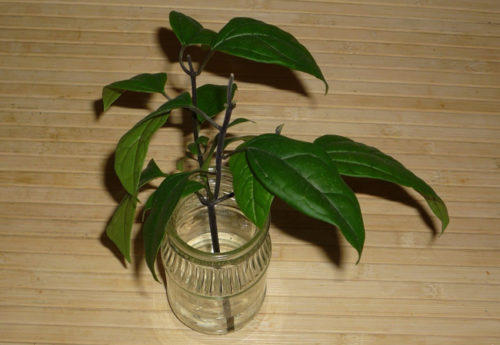
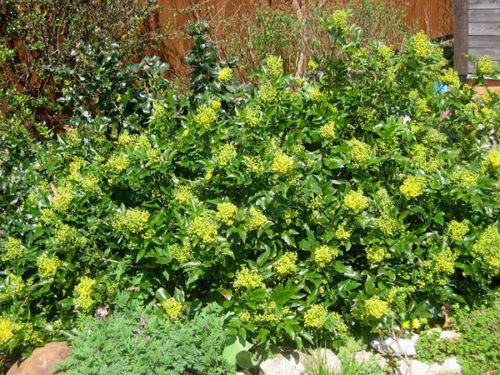
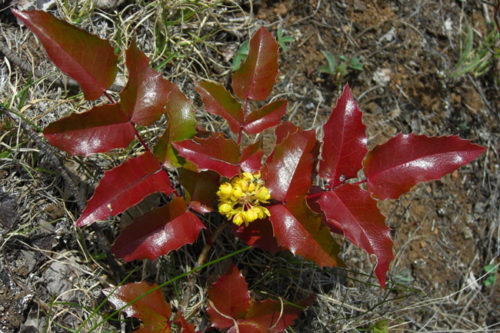
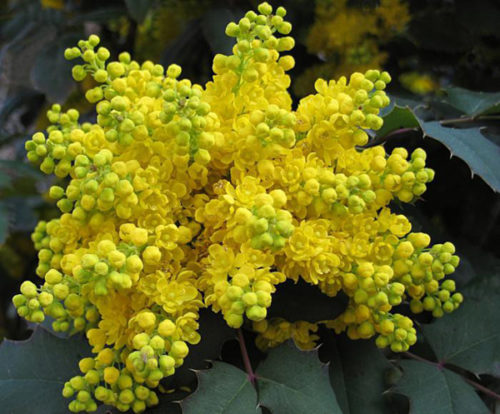
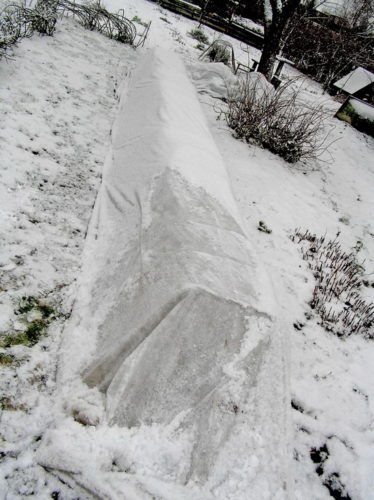
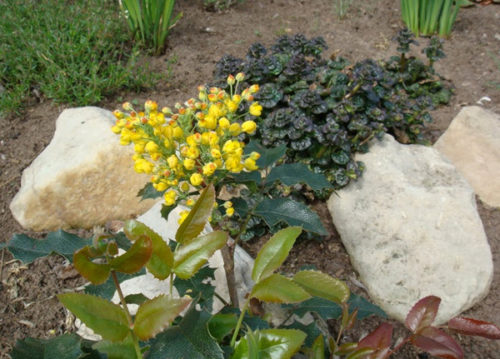
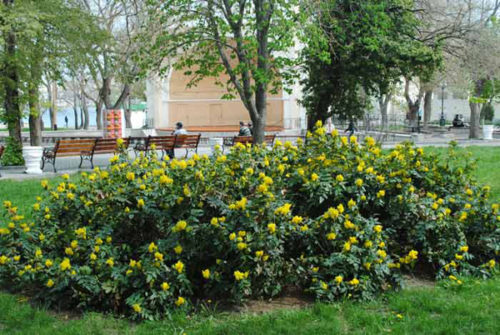
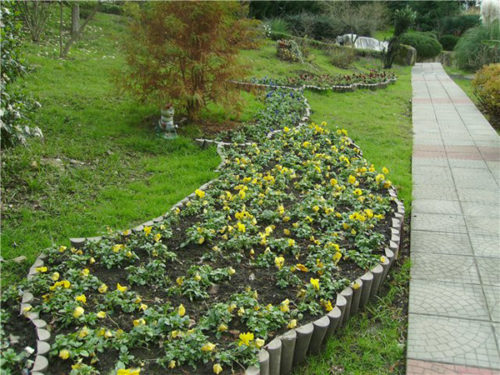
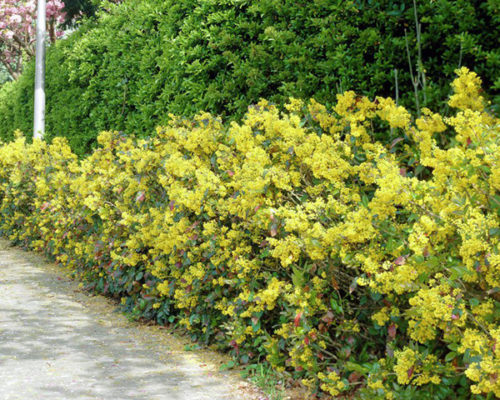












 Start a discussion ...
Start a discussion ...